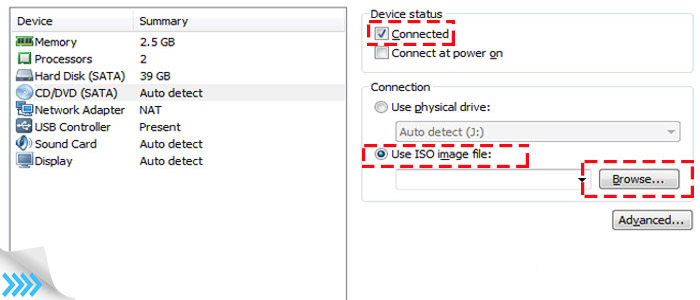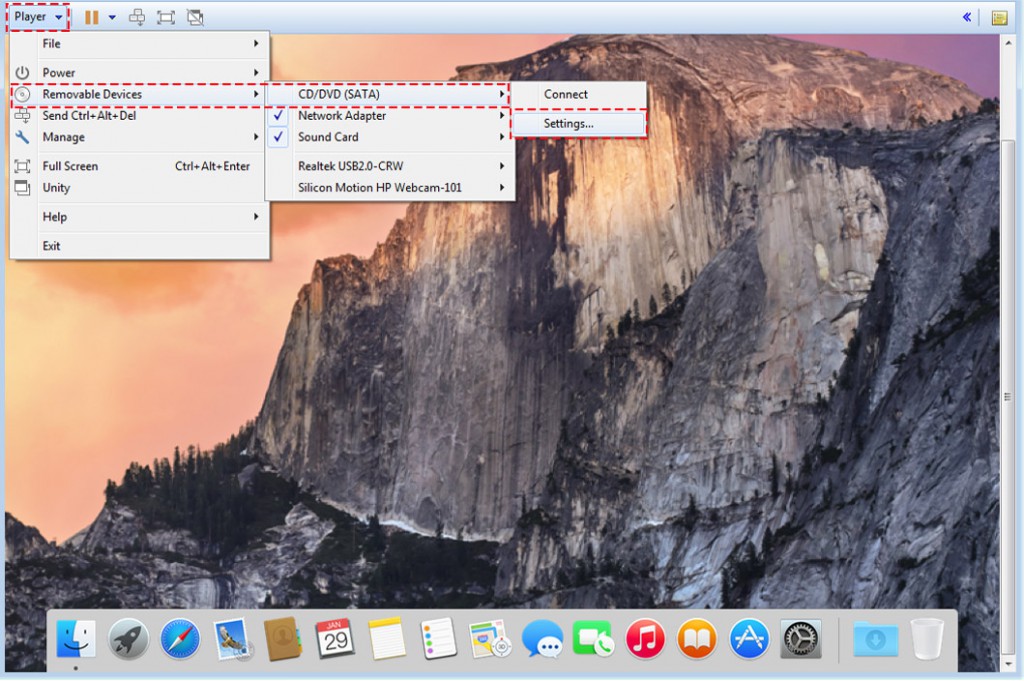HelpSpot, a PHP application, is generally a breeze to install on Linux or Unix. Unfortunately, getting PHP running--and hooked to Microsoft SQL Server -- on Windows is tricky at best and left us spending a significant amount of time with our customers to get them up and running.Ian LandsmanFounder and President, UserScape
We wanted to alleviate this pain for our customers while giving them a more familiar Windows-like experience when installing HelpSpot. The team at InstallBuilder was able to put together a custom solution for us which not only allowed our users to install the standard WAMP stack but also optionally offered installing PHP with IIS and SQL Server.
Through the development process they provided truly awesome customer service by being extremely responsive and delivering a high quality product. It's been a huge success with our customers and in reducing some of our support load; HelpSpot installations on a Windows server are completed in minutes rather than hours.
InstallBuilder knows how to deliver great support and when you're talking about something as important as your products installer, nothing less will do.
To install VMware tools, download VMware tools and browse it to your macOS High Sierra virtual machine. VMware tools appear on your desktop and click on Install VMware tools. Click Continue for a couple of times and restart your device. That’s all how you can install VMware tools on macOS High Sierra to fix screen resolution and graphics issues.
- Unix (Linux, Mac OS X) Knitro is supported on Linux (64-bit), Mac OS X (64-bit x8664 on Mac OS X 10.8 or higher). The Knitro software package for Unix is delivered as a gzipped tar file, or as a zip file on Mac OS X. Save this file in a fresh subdirectory on your system.
- Login with your login password. When you choose VM Install VMware Tools from the VMware Workstation menu, VMware Workstation temporarily connects the virtual machine’s first virtual CD-ROM drive to the ISO image file that contains the VMware Tools installer for your guest operating system and you are ready to begin the installation process.
- Open the VMware Workstation Player dashboard. Right-click on the virtual machine that you have macOS Mojave installed as a guest and click on settings. Select “CD/DVD (SATA)”, now on the right column this give you an option to choose an iso file. Under “Use ISO image file”, click on “Browse”.
- The libirecovery library allows communication with iBoot/iBSS of iOS devices via USB. Libirecovery is a cross-platform library which implements communication to iBoot/iBSS found on Apple's iOS devices via USB.


Knitro is supported on Linux (64-bit), Mac OS X (64-bit x86_64 on Mac OS X 10.8 or higher).
The Knitro software package for Unix is delivered as a gzipped tar file, or as a zip file on Mac OS X. Save this file in a fresh subdirectory on your system. To unpack a gzipped tar file, type the commands:
Unpacking will create a directory named knitro-13.0.0-z. Contents of the full product distribution are the following:
INSTALL: A file containing installation instructions.LICENSE_KNITRO: A file containing the Knitro license agreement.README: A file with instructions on how to get started using Knitro.Knitro_13_0_ReleaseNotes: A file containing release notes.get_machine_ID: An executable that identifies the machine ID, required for obtaining a Artelys license file.doc: A directory containing Knitro documentation, including this manual.include: A directory containing the Knitro header fileknitro.h.lib: A directory containing the Knitro library files:libknitro.aandlibknitro.so(libknitro.dylibon Mac OS X), as well as any other libraries that can be used with Knitro.examples: A directory containing examples of how to use the Knitro API in different programming languages (C, C++, Fortran, Java, Julia, Python, R). Theexamples/Cdirectory contains the most extensive set (seeexamples/C/README.txtfor details).knitroampl: A directory containing knitroampl (the Knitro solver for AMPL), instructions, and an example model for testing Knitro with AMPL.knitromatlab: A folder containing the files needed to use the Knitro solver for MATLAB, example models, and the instructions and explanation fileREADME.
To activate Knitro for your computer you will need a valid Artelys license file. If you purchased a floating network license, then refer to the Artelys License Manager User’s Manual. For a stand-alone license, execute get_machine_ID, a program supplied with the distribution. This will generate a machine ID (five pairs of hexadecimal digits).
If purchased through Artelys, you may request your license key from your Artelys customer area at https://www.artelys.com/en/home using your machine ID (please contact info-knitro@artelys.com if you have any issue with your customer area). If Knitro was purchased through a distributor, then email the machine ID to your local distributor. Artelys (or your local distributor) will then send a license file containing the encrypted license text string. The Artelys license manager supports a variety of ways to install licenses. The simplest procedure is to copy each license into your HOME directory. The license file name may be changed, but must begin with the characters artelys_lic (use lower-case letters). If this does not work, try creating a new environment variable called ARTELYS_LICENSE and set it to the folder holding your license file(s). See information on setting environment variables below and refer to the Artelys License Manager User’s Manual for more installation details.
Setting environment variables
In order to run Knitro binary or executable files from anywhere on your Unix computer, as well as load dynamic, shared libraries (i.e. “.so” or “.dylib” files) used by Knitro at runtime, it is necessary to make sure that several environment variables are set properly on your machine.
In particular, you must update the PATH environment variable so that it indicates the location of the knitroampl directory (or whichever directory contains the knitroampl executable file). You must also update the LD_LIBRARY_PATH (DYLD_LIBRARY_PATH on Mac OS X) environment variable so that it indicates the location of the Knitro lib directory (containing the Knitro provided “.so” or “.dylib” shared libraries).
Setting the PATH and LD_LIBRARY_PATH (DYLD_LIBRARY_PATH on Mac OS X) environment variables on Unix systems can be done as follows. In the instructions below, replace <file_absolute_path> with the full path to the directory containing the Knitro binary file (e.g. the knitroampl directory), and replace <file_absolute_library_path> with the full path to the directory containing the Knitro shared object library (e.g. the Knitro lib directory).
Linux

If you run a Unix bash shell, then type:

If you run a Unix csh or tcsh shell, then type:
Mac Os X Manual Vmware Tools Install Eagle Echo Dot
Mac OS X
Determine the shell being used:
If you run a Unix bash shell, then type:
If you run a Unix csh or tcsh shell, then type:
Note that the value of the environment variable is only valid in the shell in which it was defined. Moreover, if a particular environment variable points to more than one directory that contains a binary or dynamic library of the same name, the one that will be chosen is the one whose directory appears first in the environment variable definition.
If you are using Knitro with AMPL, you should also make sure the directory containing the AMPL executable file ampl is added to the PATH environment variable (as well as the directory containing the knitroampl executable file as described above). Additionally, if you are using an external third party runtime library with Knitro such as your own Basic Linear Algebra Subroutine (BLAS) libraries (see user options blasoption and blasoptionlib), or a Linear Programming (LP) solver library (see user option act_lpsolver), then you will also need to add the directories containing these libraries to the LD_LIBRARY_PATH (DYLD_LIBRARY_PATH on Mac OS X) environment variable.
If you are setting the ARTELYS_LICENSE environment variable to activate your license, then follow the instructions above to create a new environment variable called ARTELYS_LICENSE and give it the value of the directory containing your Artelys license file (specify the whole path to this directory). For more installation options and general troubleshooting, read the Artelys License Manager User’s Manual.

Knitro for MATLAB
Vmware Tools Download
To use Knitro with MATLAB, you may need to add the Knitro/MATLAB interface files to your MATLAB path. Assuming the default installation folders were used and the KNITRODIR environment variable contains the path to the Knitro installation directory, the MATLAB path can be updated with the following commands in MATLAB:
How To Install Vmware Tools On Mac
Alternatively, if the environment variable is not set properly, you can update the MATLAB path by calling addpath() with the full path to the Knitro/MATLAB interface files, such as:
